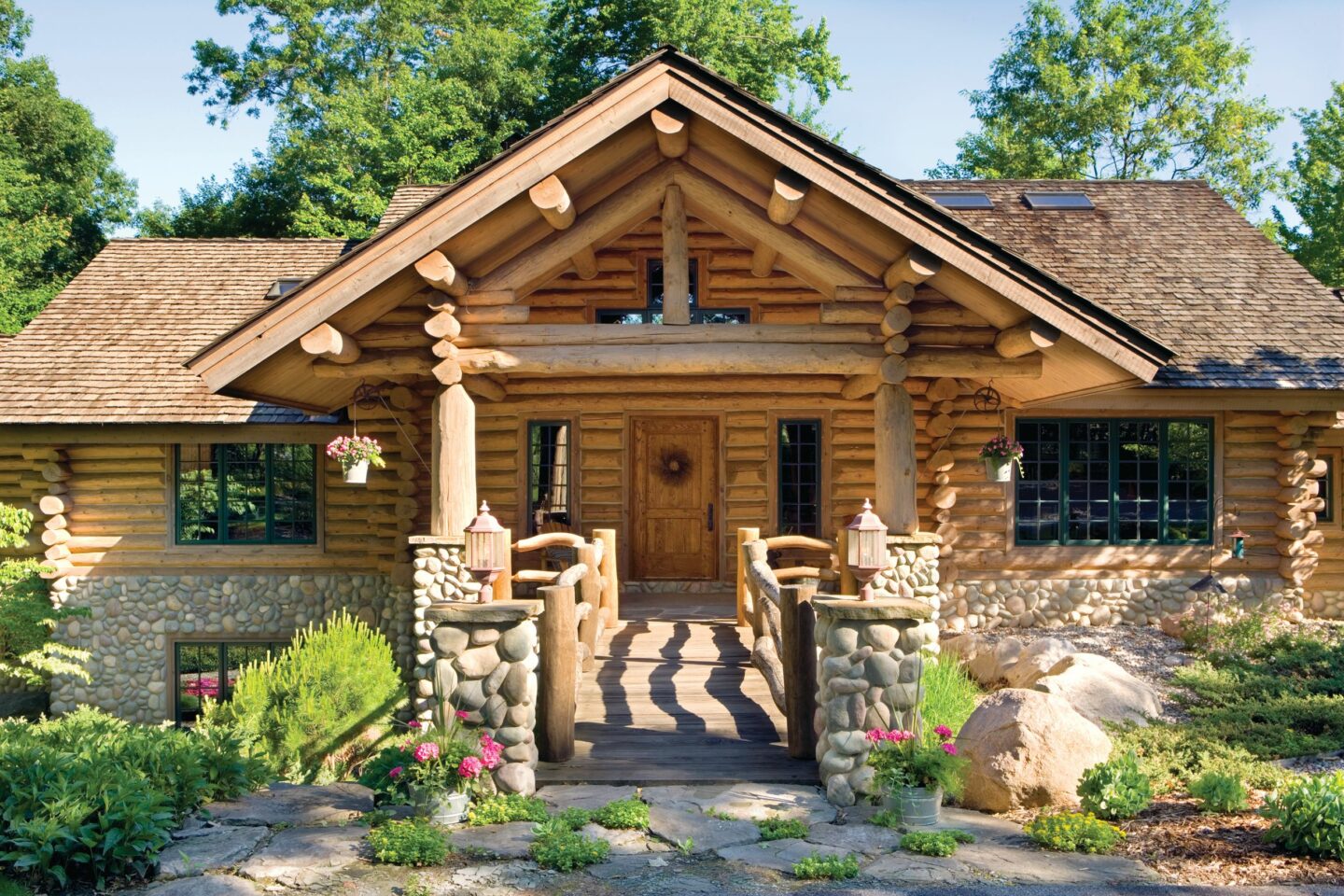Consistency is the key to saving time and money.
Once you complete your new log or timber frame home, you may anticipate that all the work is complete. However, since wood is an organic building material, one must not forget Mother Nature. Her damaging arsenal includes ultraviolet light, water, insects, and decay.
Not that log and timber homes require more maintenance or increased costs than conventional homes; it’s just that they require consistency. “You have to commit to protecting your investment,” says Melissa Tindle, plant manager at Weatherall in Louisville, Kentucky, which offers a free detailed guide to maintenance on its website.
Charis Babcock, brand manager at Sashco in Brighton, Colorado, agrees about consistency. “It should only take a couple of weekends each year, in the spring and the fall. Homeowners can download that inspection list from our website,” Babcock says.
Conduct Visual Inspections
Log homeowners should be on the lookout for upward-facing cracks or checks on logs that can cause decay, peeling stain, caulk failure, insect activity, mold, or backsplash damage to logs near the ground. Timber frame homeowners should inspect any outdoor framing for peeling stain, sun damage, or insect activity.
Neglecting to perform these inspections is where things get pricey and problematic. “We have a chart that directly shows that the number of years that maintenance is not performed is directly linked to increased costs to fix them,” Babcock says. “What could be a $500 or a $1,000 fix initially can turn into a $40,000 fix in five or 10 years if the issue is ignored. That’s why we always advise homeowners to keep it in the easy zone.”
Yearly maintenance should include annual power-washing of the exterior logs, says Tony Huddleston, vice president of operations at Perma-Chink Systems in Redmond, Washington. “It’s to remove the dust, pollen and other surface pollutants that make the finish look duller than it really is,” Huddleston says. “Attention should be paid to the south and west sides, as is the same with any stain exposure.”
Sealing the Home
To keep Mother Nature at bay, the industry has created a family of products called sealants. These materials keep your new home cozy by sealing the cracks and settling spaces between logs and around doors and window frames. They will reduce heating and cooling costs, protect against water infiltration, and keep out uninvited guests, such as insects and decay.
Only use Log and Timber Home Products
Log and timber home sealants are specially formulated to adhere to wood and to expand and contract with the seasons. They bear no resemblance to products sold at home centers for conventional construction.
Barbara Murray of CTA Products Group stresses, “Not all log home finishes are the same. Each manufacturer has specific instructions for surface prep and application of their product. Stain suppliers who support and participate in the log home industry offer products that are suitable for log homes, but each label deserves to be read and instructions followed prior to use.” When in doubt about how to maintain your home stain or finish, contact the product manufacturer or your home producer.

Check for Chemical Compatibility
Products are either oil- or water-based, and most of the time the two are not compatible. If you change product lines, you may have to strip the sealants and stains from the home and then apply new products.
Read the Directions
This may seem like a no-brainer, but if you ignore this crucial step, you can make colossal and costly errors. To help, manufacturers offer how-to videos, online instructions, and information sheets for each product.
Chemical Sealants
Chemical sealants are one of the last products applied to your new home after construction, but one of the first lines of defense against Mother Nature. Using a caulk gun, sealants are injected into all vertical and horizontal crevices, including between log courses, along window and doorframes, by the roof system—any place where water or insects can penetrate.
Sealants can blend with the stain on your logs to be nearly invisible, or they can form a wide band of material that is a different color than your logs and timbers, serving as a dramatic architectural counterpoint—sometimes called ‘chinking.’ Chinking is popular with homebuyers seeking a historic appearance.
Can you stain your logs before applying sealant or chinking? Or should you seal the home, then stain? The answer depends on the product line you choose and the moisture content of the logs, which should be below 18%, as measured by a moisture meter. Each manufacturer has its own established protocol for applying their products.
Choosing between pros or DIY
Do you want to perform the work yourself or hire a pro? The answer depends on your budget, experience, terrain, and a host of other factors. Most homeowners choose a professional because the work can be dangerous, and the required skill level is fairly advanced.
To keep your new dream home perfect, plan on a casual stroll around the perimeter twice a year with an eye out for any issues. Then call a pro in for whatever quick fixes you might need.

